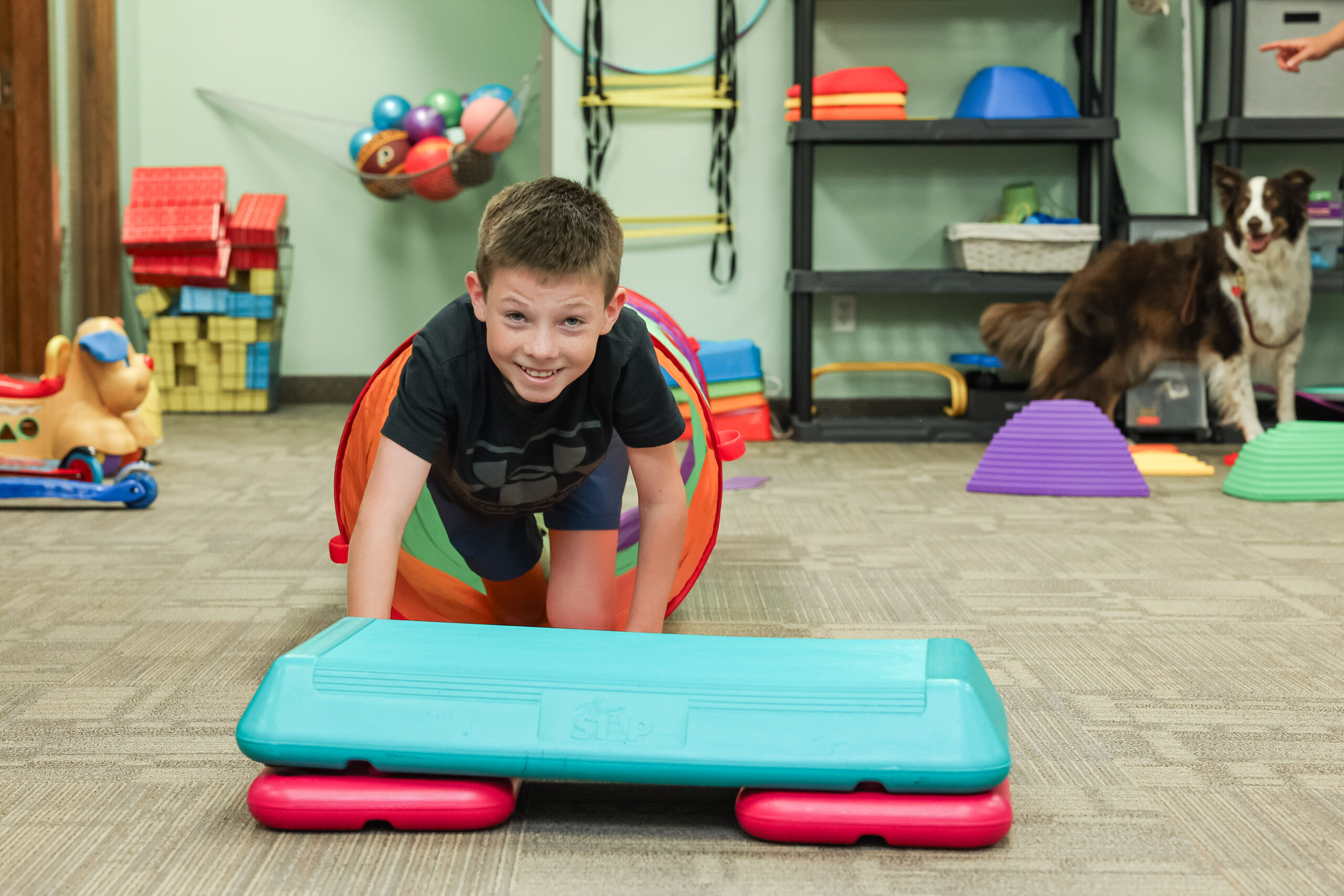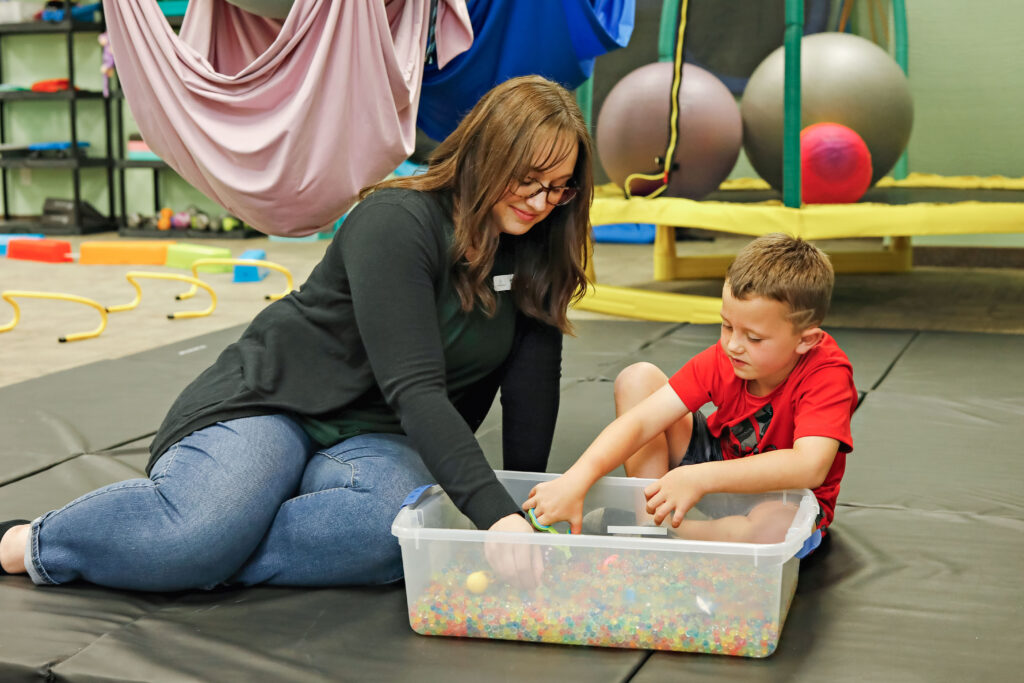
As parents and caregivers, it’s natural to be concerned about your child’s development and milestones. One area that may raise questions is primitive reflexes — automatic movements or reactions that are present at birth and typically fade as the nervous system matures. However, when these reflexes remain beyond infancy, they may impact a child’s physical, cognitive, and emotional development. This is where pediatric occupational therapy (OT) comes into play, helping children integrate these reflexes to reach their full potential!
In this post, we’ll explore common retained primitive reflexes that we test at Little Legends Therapy during every evaluation such as the STNR, ATNR, Moro reflex, Fear Paralysis reflex, Galant reflex, and TLR. We’ll also discuss how pediatric occupational therapy can help address these challenges.
What Are Primitive Reflexes?
Primitive reflexes are involuntary movements that help infants survive during the early months of life. These reflexes serve as the foundation for more complex voluntary movements and motor control as the brain matures. Ideally, these reflexes should integrate or disappear as a child grows, typically by the age of 1. However, in some children, these reflexes persist, potentially hindering normal development.
Common Retained Primitive Reflexes
1. Symmetrical Tonic Neck Reflex (STNR)
The STNR is an important reflex that helps with the development of eye-hand coordination and the ability to separate the movements of the upper and lower body. It typically appears around 6-9 months and should integrate by 12 months.
- Signs of a retained STNR:
- Difficulty with crawling, sitting, or standing.
- Trouble with tasks that require hand-eye coordination like writing or using utensils.
- Poor posture, with children often slumping when sitting.
- How OT helps: Pediatric occupational therapists use activities that promote bilateral integration (using both sides of the body together) and postural control, helping children strengthen the muscles involved in the STNR reflex.
2. Asymmetrical Tonic Neck Reflex (ATNR)
The ATNR reflex is often called the “fencing reflex” because it causes an infant’s head to turn to one side, with the arm and leg on the same side extending and the opposite side flexing. It typically integrates by around 6 months.
- Signs of a retained ATNR:
- Difficulty with crossing the midline of the body (e.g., reaching across the body to use the opposite hand).
- Challenges with visual tracking and reading.
- Poor bilateral coordination.
- How OT helps: Therapy focuses on improving coordination between both sides of the body, encouraging midline crossing through activities like reaching, playing, and specific hand-eye coordination exercises.
3. Moro Reflex
The Moro reflex is a startle reflex that causes infants to throw their arms and legs out when they feel a sensation of falling or hear a loud noise. It begins to fade by 4-6 months.
- Signs of a retained Moro reflex:
- High anxiety or sensitivity to sudden changes in the environment.
- Difficulty with emotional regulation, often experiencing heightened stress or fear responses.
- Problems with balance and coordination, particularly when engaging in activities that involve body awareness.
- How OT helps: Occupational therapists may use relaxation techniques, deep pressure input, and activities to help the child develop greater emotional regulation and a sense of safety.
4. Fear Paralysis Reflex
The Fear Paralysis reflex is an early survival mechanism in infants. It causes a temporary “freeze” response to stressful or fearful stimuli. It should naturally integrate by around 2-3 months.
- Signs of a retained Fear Paralysis reflex:
- Difficulty in managing stress and anxiety, often leading to a “frozen” or withdrawn response.
- Behavioral issues such as avoidance or extreme reactions to certain situations.
- Challenges in developing trust and emotional regulation.
- How OT helps: OTs help children gradually build emotional resilience, using calming strategies and sensory activities to desensitize the child to stressful stimuli and improve emotional processing.
5. Galant Reflex
The Galant reflex is triggered when an infant is stroked along the side of their spine, causing the body to arch towards the side being touched. This reflex typically fades by 3-9 months.
- Signs of a retained Galant reflex:
- Difficulty sitting still, especially when seated on hard surfaces.
- Problems with posture and coordination.
- Poor bladder control and toilet training delays (bedwetting is very common!)
- How OT helps: Pediatric OTs work on strengthening core muscles, improving posture, and providing sensory input to integrate this reflex. Balance exercises and movements that promote spinal awareness are helpful.
6. Tonic Labyrinthine Reflex (TLR)
The TLR is responsible for helping infants move from a lying to a sitting position. This reflex affects head control and posture and typically integrates by 6 months of age.
- Signs of a retained TLR:
- Poor balance, especially when transitioning from lying down to sitting or standing.
- Difficulty with activities that require head control, such as reading or riding a bike.
- Challenges with motor planning and coordination, making it hard for the child to learn new motor tasks.
- How OT helps: Occupational therapists help children develop better head and body control through exercises that improve balance, muscle strength, and coordination, supporting overall physical development.
The Role of Pediatric Occupational Therapy
Pediatric occupational therapists play a crucial role in addressing retained primitive reflexes by providing targeted interventions that promote integration of these reflexes. Some common OT interventions include:
- Sensorimotor activities: These activities help the brain process sensory information and respond appropriately, encouraging proper reflex integration.
- Postural control exercises: Strengthening core muscles and improving posture helps with balance and coordination.
- Coordination tasks: Activities that challenge motor planning, such as puzzles, writing, and hand-eye coordination games, support the development of higher-level skills.
- Emotional regulation: Therapy may also focus on helping children manage their emotional responses, particularly if retained reflexes are affecting their ability to deal with stress.
- Reflex Integration Exercises and Home Programming: Josi Gibbs at Little Legends Therapy is a Certified Clinical Reflex Specialist (CPRCS) who can implement specialized exercises and home programming based on your child’s needs.
Conclusion
When primitive reflexes are retained beyond infancy, they can disrupt a child’s development, affecting motor skills, emotional regulation, and academic performance. Pediatric occupational therapy offers valuable tools to help integrate these reflexes and support children in reaching their full potential. If you suspect your child has retained primitive reflexes, consider reaching out to an occupational therapist to learn more about tailored interventions that can make a significant difference in their development. Feel free to call or text us at 406-647-0042 to get on our schedule today!







No comment yet, add your voice below!